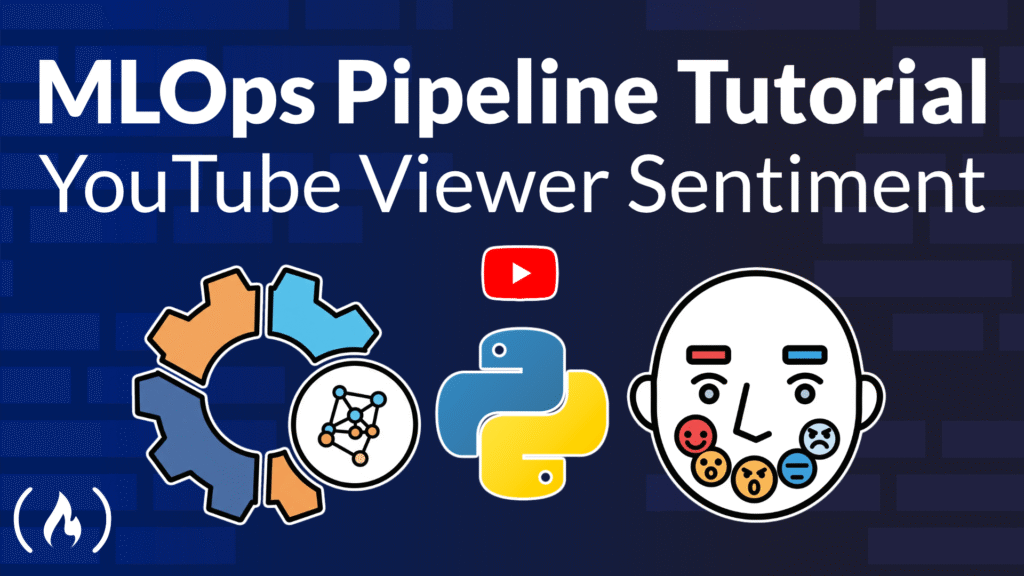If you’re serious about machine learning and want to break into real-world ML engineering, learning MLOps is one of the best things you can do. It’s what turns experiments into reliable systems. You can train a great model, but without the right pipeline to deploy, monitor, and update it, that model won’t be useful in a real application. MLOps is how companies ship machine learning at scale, and even if you’re working solo or on smaller projects, knowing how to build proper ML pipelines will save you tons of time and headaches. Plus, it’s one of the most in-demand skill sets in the industry right now.
We just released a new video course on the freeCodeCamp.org YouTube channel that teaches you how to build a full end-to-end MLOps pipeline by working on a real, practical project. You’ll create a system that analyzes the sentiment of YouTube comments in real time using a Chrome extension. This isn’t just another toy example. It’s a full production-ready pipeline that covers everything from data collection to deployment, and it uses real tools that are used in modern ML workflows: MLflow, DVC, Docker, AWS, Flask, and more. The course is taught by Bappy Ahmed, who walks through each step in a clear, practical way, so you actually understand what’s happening.
Here’s what the course covers:
-
Introduction & Project Planning – Understand the problem and design the architecture of the full pipeline.
-
Data Collection – Learn how to scrape YouTube comments and prepare the data you’ll use to train the sentiment model.
-
Data Preprocessing & EDA – Clean the data, explore patterns, and prep it for training.
-
Setup MLflow Server on AWS – Use MLflow to track experiments and manage your models.
-
Building a Baseline Model – Start simple with a basic model to establish a performance benchmark.
-
Improving the Model – Experiment with techniques like Bag of Words, TFIDF, adjusting feature sizes, handling class imbalance, and hyperparameter tuning.
-
Stacking Models – Use ensemble techniques to combine different models for better performance.
-
Build a Full ML Pipeline Using DVC – Break your code into modular components (data ingestion, preprocessing, model building, etc.) and version everything using DVC.
-
Model Evaluation and Registration with MLflow – Evaluate performance and keep track of the best models.
-
Deploy with Flask and Docker – Wrap your model in a Flask API, containerize it with Docker, and prepare it for production.
-
Create a Chrome Plugin – Build a browser extension that interacts with your deployed model in real time.
-
CI/CD Deployment on AWS – Automate your deployment so updates happen smoothly and reliably.
By the end, you’ll have a working, deployed MLOps project that shows you understand the full ML lifecycle. This course is perfect for anyone who already knows a bit of machine learning and wants to level up their engineering skills.
You can watch the full course on the freeCodeCamp.org YouTube channel (3-hour watch).
Source: freeCodeCamp Programming Tutorials: Python, JavaScript, Git & MoreÂ
